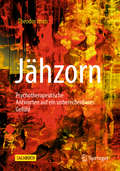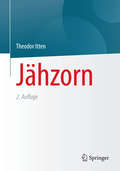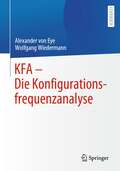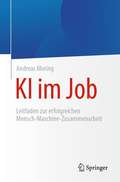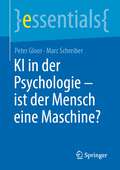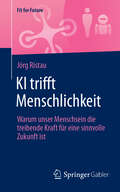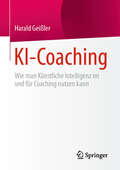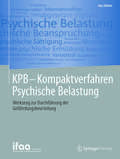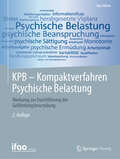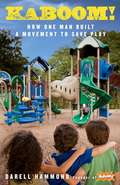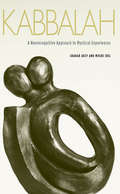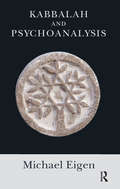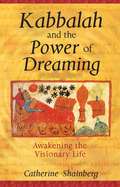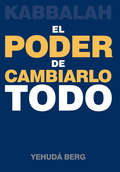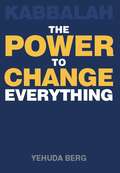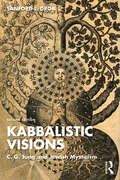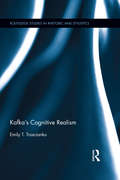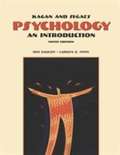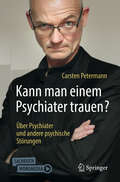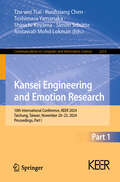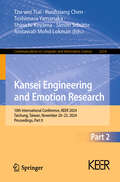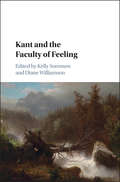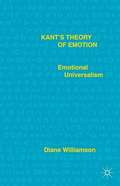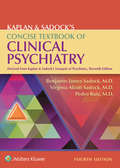- Table View
- List View
Jähzorn: Psychotherapeutische Antworten auf ein unberechenbares Gefühl
by Theodor IttenDie zerstörerische Wucht des Jähzorns ist bekannt, sozialwissenschaftlich wurde sie bisher tabuisiert. Beruflich und privat sind wir Zeugen von Ausbrüchen des Jähzorns. Zur Untermauerung dieser Beobachtungen wurden an die 600 Personen zu ihren persönlichen Erfahrungen mit Jähzorn befragt. Das Ergebnis: 24 % der Befragten sind jähzornig. Das im Jahr 2007 erstmalig, im deutschsprachigen Raum, veröffentlichte Buch zum plötzlichen, anfallsmässigen Zorn, bietet einen vielschichtigen, interessanten Gang durch die Kulturgeschichte und Sozialpsychologie des Jähzorns. Es gibt Antworten auf folgende Fragen: „Wo kommt der Jähzorn her? Wie zeigt sich Jähzorn? Was können wir tun?“ Verschiedene Perspektiven und Erfahrungen von Täter und Opfer werden geschildert und im sozialkulturellen Kontext erläutert. Bewegende Einzelfallstudien liefern zahlreiche hilfreiche Hinweise und Einsichten zum Verständnis des Jähzorns. Die psychotherapeutischen Antworten auf dieses unberechenbare Gefühl sind in der dritten, überarbeiteten Auflage, vielfältigere und facettenreichere Quellen. Möglichkeiten von therapeutischen Aspekten der Selbstbefähigung werden aufgezeigt, mit gepflegter, dauerhafter Übung sind sie auch umsetzbar. Ein Buch für Betroffene, Angehörige und Wirkende in helfenden, therapeutischen Berufen.
Jähzorn: Psychotherapeutische Antworten auf ein unberechenbares Gefühl
by Theodor IttenDie zerstörerische Wucht des Jähzorns ist bekannt, sozialwissenschaftlich wurde sie bisher tabuisiert. Beruflich und privat sind wir Zeugen von Ausbrüchen des Jähzorns. Zur Untermauerung dieser Beobachtungen wurden an die 600 Personen zu ihren persönlichen Erfahrungen mit Jähzorn befragt. Das Ergebnis: 24 % der Befragten sind jähzornig. Das im Jahr 2007 erstmalig, im deutschsprachigen Raum, veröffentlichte Buch zum plötzlichen, anfallsmässigen Zorn, bietet einen vielschichtigen, interessanten Gang durch die Kulturgeschichte und Sozialpsychologie des Jähzorns. Es gibt Antworten auf folgende Fragen: „Wo kommt der Jähzorn her? Wie zeigt sich Jähzorn? Was können wir tun?“ Verschiedene Perspektiven und Erfahrungen von Täter und Opfer werden geschildert und im sozialkulturellen Kontext erläutert. Bewegende Einzelfallstudien liefern zahlreiche hilfreiche Hinweise und Einsichten zum Verständnis des Jähzorns. Die psychotherapeutischen Antworten auf dieses unberechenbare Gefühl sind in der zweiten, überarbeiteten Auflage, vielfältigere und facettenreichere Quellen. Möglichkeiten zum Selbstmanagement werden aufgezeigt, mit gepflegter, dauerhafter Übung sind sie auch umsetzbar. Ein Buch für Betroffene, Angehörige und Wirkende in helfenden, therapeutischen Berufen.
KFA – Die Konfigurationsfrequenzanalyse
by Wolfgang Wiedermann Alexander von EyeDieser Band stellt umfassend die Methoden der Konfigurationsfrequenzanalyse (KFA) vor, eines von G.A. Lienert erstmals eingebrachten Verfahrens zur Testung von Hypothesen in Bezug auf Häufigkeiten in individuellen Zellen oder Gruppen einer Kreuzklassifikation. Die Autoren, die die Methode weiterentwickelt haben, bieten eine umfassende Darstellung der Grundlagen, Modelle und konkreten Anwendungsfälle in der psychologischen und sozialwissenschaftlichen, personen-orientierten Forschung. Dabei werden die Anfänge der KFA und ihr Bezug zur Chi-Quadrat Analyse ebenso beschrieben wie die Entwicklungen, die auf log-linearen Modellen basieren. Für jedes Modell und für jede Fragestellung, die mit der KFA untersucht werden können, werden empirische Datenbeispiele präsentiert. Neue Ergebnisse werden durch Monte-Carlo Simulationen untermauert sowie neue Modelle entwickelt und vorgestellt.Das Buch richtet sich zum einen an Leser*innen, die über grundlegendes Hintergrundwissen in der angewandten Statistik aus einführenden Kursen und Kursen über log-lineare Modelle verfügen. Aber auch Leserinnen und Leser ohne diese Kenntnisse können von diesem Buch profitieren, weil alle nötigen technischen Elemente eigens eingeführt und erklärt werden. Computerprogramme werden vorgestellt und in Beispielen angewendet. Insgesamt stellt sich die KFA als statistische Methode dar, mit der für kategoriale Daten wichtige und interessante Fragen bearbeitet werden können, die im Kontext der Anwendung von Routinemethoden der Statistik nicht zugänglich sind.
KI im Job: Leitfaden zur erfolgreichen Mensch-Maschine-Zusammenarbeit
by Andreas MoringDieses Buch ist ein praktischer Leitfaden für die Nutzung von Künstlicher Intelligenz mit motivierten Mitarbeitern in Unternehmen und Organisationen. Sie erfahren, was die Voraussetzungen dafür sind, dass Menschen sich auf eine produktive Zusammenarbeit mit „intelligenten Maschinen“ freuen können. Denn nur so kann das volle Potenzial von KI gehoben werden. Dazu erhalten Sie einen Überblick, wie und wo KI in Unternehmen eingesetzt werden kann und wie Sie die richtigen Einsatzfelder für KI in Ihrem Unternehmen identifizieren. Dabei geht es vor allem um die folgende Fragestellung: Welche Aufgaben übernimmt zukünftig die KI und welche sollen weiterhin von den Mitarbeiter/innen durchgeführt werden. Diese Entscheidungen verändern Prozesse und Aufgaben und erfordern praktisches Change Management und Motivation. In diesem Buch erfahren Sie, wie Sie Menschen für diese neuen Aufgaben motivieren und begeistern können, damit die Schritte zum Einsatz von KI im Arbeitsumfeld bestmöglich gelingen können. Zum Autor: Prof. Dr. Andreas Moring ist Professor für Digital Business, Innovation & AI an der International School of Management. Er ist Gründer und Leiter des JuS.TECH Instituts für KI und Nachhaltigkeit, Co-Gründer der Initiative WeGoFive für eine produktive Mensch-KI.Kooperation und Themenpate für Mensch-KI-Kooperation am Artificial Intelligence Center ARIC in Hamburg.
KI in der Psychologie - ist der Mensch eine Maschine? (essentials)
by Peter Gloor Marc SchreiberIm Buch wird die Frage diskutiert, ob der Mensch eine Maschine ist und ob Algorithmen der künstlichen Intelligenz (KI) das menschliche Erleben und Handeln jemals komplett abbilden können werden. Die Fragen werden sowohl aus der Perspektive der Psychologie als auch aus derjenigen der Informatik beleuchtet. Anhand von konkreten Projekten werden die Gemeinsamkeiten und Unterschiede der beiden Perspektiven erläutert und es werden Probleme sowie ethische Fragestellungen im Zusammenhang mit der Anwendung von KI-Algorithmen in psychologischen Anwendungsfeldern thematisiert.
KI trifft Menschlichkeit: Warum unser Menschsein die treibende Kraft für eine sinnvolle Zukunft ist (Fit for Future)
by Jörg RistauDie KI-Revolution ist längst Realität – und sie stellt uns vor eine entscheidende Frage: Lassen wir uns von der Technik treiben oder nutzen wir sie, um unsere Kreativität, Empathie und Sinnhaftigkeit auf ein neues Level zu heben? Dieses Buch ist ein Weckruf, KI bewusst und wirkungsvoll einzusetzen – nicht als Ersatz, sondern als Verstärkung unserer Menschlichkeit. Denn die Revolution der KI ist keine technische – sie ist eine menschliche Revolution. Mit wegweisenden Impulsen für eine zukunftsorientierte Führung, die Menschlichkeit ins Zentrum rückt, und praxisnahen Werkzeugen zeigt dieses Buch, wie wir die Beziehung zwischen Mensch und Maschine aktiv gestalten können. Damit Führungskräfte, Unternehmen und jeder Einzelne die Möglichkeiten der Digitalisierung klug nutzen – ohne das Wesentliche aus den Augen zu verlieren.
KI-Coaching: Wie man Künstliche Intelligenz im und für Coaching nutzen kann
by Harald GeißlerDie Künstliche Intelligenz bestimmt immer mehr Bereiche unseres privaten, gesellschaftlichen und beruflichen Lebens. Auch wenn manche Coaches es nicht recht wahrhaben wollen bzw. sich viele gegen diese Entwicklung wehren, wird sie mit Sicherheit auch Coaching erfassen. Die Frage ist nur, wie das geschehen wird – bzw. welche Möglichkeiten wir haben, die auf uns zukommenden Entwicklungen human bzw. coachingprofessionell zu gestalten. Wird Künstliche Intelligenz immer mehr Coaches ersetzen und in der Coachingpraxis sozusagen die Herrschaft übernehmen? Oder gibt es Möglichkeiten einer wahrhaft humanen Nutzung – und welche Möglichkeiten sind das ganz konkret?
KPB - Kompaktverfahren Psychische Belastung
by Institut für angewandte ArbeitswissenschSeit der Novellierung des Arbeitsschutzgesetzes ist die psychische Belastung im Rahmen der Gefährdungsbeurteilung explizit zu berücksichtigen. Die zunehmende Bedeutung der psychischen Gesundheit in der Arbeitswelt verdeutlicht, dass psychische Faktoren im Rahmen der Prävention wichtig sind. Das Kompaktverfahren Psychische Belastung gibt einen Überblick über die rechtlichen Grundlagen und beschreibt eine gestufte Vorgehensweise zur Ermittlung und Bewertung psychischer Belastung bei der Arbeit. Die praktische Arbeit wird mit einfachen Checklisten und Verfahrenshinweisen für die Beurteilung und Dokumentation der Gefährdungsbeurteilung unterstützt. Die vorliegende fünfte überarbeitete Version des in der Praxis bewährten KPB berücksichtigt die Empfehlungen der Gemeinsamen Deutschen Arbeitsschutzstrategie (GDA).
KPB - Kompaktverfahren Psychische Belastung: Werkzeug zur Durchführung der Gefährdungsbeurteilung (ifaa-Edition)
by ifaa – Institut für angewandte Arbeitswissenschaft e.V.Seit der Novellierung des Arbeitsschutzgesetzes ist die psychische Belastung im Rahmen der Gefährdungsbeurteilung explizit zu berücksichtigen. Die zunehmende Bedeutung der psychischen Gesundheit in der Arbeitswelt verdeutlicht, dass psychische Faktoren im Rahmen der Prävention wichtig sind. Das Kompaktverfahren Psychische Belastung gibt einen Überblick über die rechtlichen Grundlagen und beschreibt eine gestufte Vorgehensweise zur Ermittlung und Bewertung psychischer Belastung bei der Arbeit. Die praktische Arbeit wird mit einfachen Checklisten und Verfahrenshinweisen für die Beurteilung und Dokumentation der Gefährdungsbeurteilung unterstützt. Die vorliegende fünfte überarbeitete Version des in der Praxis bewährten KPB berücksichtigt die Empfehlungen der Gemeinsamen Deutschen Arbeitsschutzstrategie (GDA).
KaBOOM! How One Man Built a Movement to Save Play
by Stuart Brown Darell HammondKaBOOM! chronicles Darell Hammond's amazing journey from a childhood spent living in a group home in Illinois to becoming the cofounder and CEO of KaBOOM!, an organization with this mission at its core: harnessing the power of community to save play for children... one playground at a time. Like The Blue Sweater and Three Cups of Tea, KaBOOM! demonstrates how one idealist can change the world and how small, civic-minded steps create a ripple effect that can precipitate change in communities and eventually change in the world at large. More than just a memoir, KaBOOM! is a call to action that will inspire readers by challenging them to rethink traditional notions of community and social change. This is the story of a man with a vision: Play is the best natural resource in a creative economy. Kids need more of it-it is not a luxury but a necessity for their lives. Through hard work, commitment, and the conviction that access to a safe play environment is the fundamental right of all children, Hammond built an organization that has raised almost $200 million, directly built 2,000 playgrounds with a million volunteers, and touched the lives of countless children and families. Photo captions are included after the index, starting on p. 287.
Kabbalah
by Moshe Idel Shahar ArzyIn this book, the world’s foremost scholar of Kabbalah explores the understanding of erotic love in Jewish mystical thought. Encompassing Jewish mystical literatures from those of late antiquity to works of Polish Hasidism, Moshe Idel highlights the diversity of Kabbalistic views on eros and distinguishes between the major forms of eroticism. The author traces the main developments of a religious formula that reflects the union between a masculine divine attribute and a feminine divine attribute, and he asks why such an "erotic formula” was incorporated into the Jewish prayer book. Idel shows how Kabbalistic literature was influenced not only by rabbinic literature but also by Greek thought that helped introduce a wider understanding of eros. Addressing topics ranging from cosmic eros and androgyneity to the affinity between C. J. Jung and Kabbalah to feminist thought, Idel’s deeply learned study will be of consuming interest to scholars of religion, Judaism, and feminism.
Kabbalah and Psychoanalysis: More Explorations Of Psychoanalysis And Kabbalah
by Michael EigenWilfred Bion once said, "I use the Kabbalah as a framework for psychoanalysis." Both are preoccupied with catastrophe and faith, infinity and intensity of experience, shatter and growth of being that supports dimensions which sensitivity opens. Both are preoccupied with ontological implications of the Unknown and the importance of emotional life. This work is a psychospiritual adventure touching the places Kabbalah and psychoanalysis give something to each other. Michael Eigen uses aspects of Bion, Winnicott, Akivah, Luria and Nachman (and many more) as colours on a palette to open realities for growth of experience. Bion called faith "the psychoanalytic attitude" and Eigen here explores creative, paradoxical, multidimensional aspects of faith. Eigen previously wrote of psychoanalysis as a form of prayer in The Psychoanalytic Mystic. In Kabbalah and Psychoanalysis he writes of creative faith. Sessions as crucibles in which diverse currents of personality mix in new ways, alchemy or soul chemistry perhaps, or simply homage to our embryonic nature which responds to the breath of feeling moment to moment.
Kabbalah and the Power of Dreaming: Awakening the Visionary Life
by Catherine ShainbergA dynamic exposition of the powerful, ancient Sephardic tradition of dreaming passed down from the renowned 13th-century kabbalist Isaac the Blind• Includes exercises and practices to access the dream state at will in order to engage with life in a state of enhanced awareness • Written by the close student of revered kabbalist Colette Aboulker-Muscat In Kabbalah and the Power of Dreaming Catherine Shainberg unveils the esoteric practices that allow us to unlock the dreaming mind's transformative and intuitive powers. These are the practices used by ancient prophets, seers, and sages to control dreams and visions. Shainberg draws upon the ancient Sephardic Kabbalah tradition, as well as illustrative stories and myths from around the Mediterranean, to teach readers how to harness the intuitive power of their dreaming. While the Hebrew Bible and our Western esoteric tradition give us ample evidence of dream teachings, rarely has the path to becoming a conscious dreamer been articulated. Shainberg shows that dreaming is not something that merely takes place while sleeping--we are dreaming at every moment. By teaching the conscious mind to be awake in our sleeping dreams and the dreaming mind to be manifest in daytime awareness, we are able to achieve revolutionary consciousness. Her inner-vision exercises initiate creative and transformative images that generate the pathways to self-realization.
Kabbalah: El Poder de Cambiarlo Todo
by Yehuda BergYehuda Berg's new book puts power back in the hands of the people. Taking into account the urgency of our times, Berg used the immediacy of social networking to engage the public in this book's creation, helping draft a new reality where everyone benefits. Each section focuses on a topic of concern to global citizens, from the environment and healthcare to the ongoing financial crisis. A special section shows how readers can use the principles of Kabbalah to effect positive change in themselves and in the world.
Kabbalah: The Power to Change Everything
by Yehuda BergFrom best-selling author and noted teacher and speaker Yehuda Berg comes a thought-provoking call to action on our current global crisis. Positing that our collective abdication of responsibility -- in every facet of our lives, including business and the economy, the environment, government and politics, healthcare, education, and religion -- has contributed to the problems and challenges we face, Berg asserts that taking responsibility for our actions (or lack thereof) and their consequences is the key to achieving change for the better. Berg urges readers to access the power within each of us, using the principles of Kabbalah, in order to create the consciousness shift required for lasting positive change.
Kabbalistic Visions: C. G. Jung and Jewish Mysticism
by Sanford L. DrobIn 1944, C. G. Jung experienced a series of visions which he later described as "the most tremendous things I have ever experienced." Central to these visions was the "mystic marriage as it appears in the Kabbalistic tradition", and Jung’s experience of himself as "Rabbi Simon ben Jochai," the presumed author of the sacred Kabbalistic text, the Zohar. Kabbalistic Visions explores Jung’s 1944 Kabbalistic visions, the impact of Jewish mysticism on Jungian psychology, Jung’s archetypal interpretation of Kabbalistic symbolism, and his claim late in life that a Hasidic rabbi, the Maggid of Mezhirech, anticipated his entire psychology. This book places Jung’s encounter with the Kabbalah in the context of the earlier visions and meditations of his Red Book, his abiding interests in Gnosticism and alchemy, and what many regard to be his Anti-Semitism and flirtation with National Socialism. Kabbalistic Visions is the first full-length study of Jung and Jewish mysticism in any language and the first book to present a comprehensive Jungian/archetypal interpretation of Kabbalistic symbolism.
Kafka's Cognitive Realism (Routledge Studies in Rhetoric and Stylistics)
by Emily TrosciankoThis book uses insights from the cognitive sciences to illuminate Kafka’s poetics, exemplifying a paradigm for literary studies in which cognitive-scientific insights are brought to bear directly on literary texts. The volume shows that the concept of "cognitive realism" can be a critically productive framework for exploring how textual evocations of cognition correspond to or diverge from cognitive realities, and how this may affect real readers. In particular, it argues that Kafka’s evocations of visual perception (including narrative perspective) and emotion can be understood as fundamentally enactive, and that in this sense they are "cognitively realistic". These cognitively realistic qualities are likely to establish a compellingly direct connection with the reader’s imagination, but because they contradict folk-psychological assumptions about how our minds work, they may also leave the reader unsettled. This is the first time a fully interdisciplinary research paradigm has been used to explore a single author’s fictional works in depth, opening up avenues for future research in cognitive literary science.
Kagan and Segal's Psychology: An Introduction (9th edition)
by Jerome Kagan Julius Segal Ernest Havemann Don Baucum Carolyn D. SmithContinuing with the character and spirit of previous editions, Don Baucum and Carolyn Smith join Jerome Kagan and Julius Segal to create a streamlined text with a free integrated study guide. The text follows a developmental theme, with an emphasis on diversity coverage and critical thinking. In many chapters, the developmental theme is highlighted by a Life Span Perspective feature that shows students the relevance of chapter topics to the development of a human life, and that helps them make connections between themes discussed in different chapters. Personal applications and real-life examples are included throughout the text to engage students in every key topic area.
Kann man einem Psychiater trauen?: Über Psychiater und andere psychische Störungen
by Carsten PetermannIn einer Mischung aus Ernst, Satire, schwarzem Humor und Poesie nimmt der Autor, selber Facharzt für Psychiatrie und Psychotherapie, auf ungewöhnliche und kreative Weise den eigenen Berufsstand aufs Korn. In einer unterhaltsam-pointierten und zugleich fachkundigen Art und Weise vermittelt er darüber hinaus, wie nebenbei, Informationen über psychische Störungen, wie die Depression, die bipolare affektive Störung, die Borderline-Persönlichkeit sowie die paranoide Schizophrenie - mit dem Ziel, auf diese einzigartige und empathische Weise Betroffenen und Angehörigen Hilfestellung anzubieten. Audioclips zu ausgewählten Abschnitten sind per MoreMediaApp abrufbar und geben einen Eindruck vom begleitenden Bühnenprogramm. Zielgruppe sind alle Leser, die sich auf unterhaltsame Weise über psychische Erkrankungen informieren möchten und schon immer gerne wissen wollten - kann man einem Psychiater trauen?
Kansei Engineering and Emotion Research: 10th International Conference, KEER 2024, Taichung, Taiwan, November 20–23, 2024, Proceedings, Part I (Communications in Computer and Information Science #2313)
by Anitawati Mohd Lokman Toshimasa Yamanaka Kuohsiang Chen Shinichi Koyama Tzu-Wei Tsai Simon SchütteThe two volume set, LNCS 2313 and LNCS 2314, constitutes the proceedings of the 10th International Conference on Kansei Engineering and Emotion Research, KEER 2024, held in Taichung, Taiwan during November 20–23, 2024. The 57 full papers presented in these volumes were carefully reviewed and selected from 154 submissions. These papers have been organized in the following topical sections:- Part I: Emotion Research in Southeast Asia (SEA): Bridging Cultures, Advancing Design; Competencies Required by Different Positions for Innovation; Exploring the Intersection of Kansei Engineering and Affective Computing in Digital Media Design Research; Image and Media in Kansei Design; Innovative Design for Cultural Sustainability. Part II: Kansei Approach to Sustainability Society; Kansei in Senses and Interaction; Kansei Issues in Cross-Cultural Design; Wellbeing/ Experience Quality of Life/ Healthcare.
Kansei Engineering and Emotion Research: 10th International Conference, KEER 2024, Taichung, Taiwan, November 20–23, 2024, Proceedings, Part II (Communications in Computer and Information Science #2314)
by Anitawati Mohd Lokman Toshimasa Yamanaka Kuohsiang Chen Shinichi Koyama Tzu-Wei Tsai Simon SchütteThe two volume set, LNCS 2313 and LNCS 2314, constitutes the proceedings of the 10th International Conference on Kansei Engineering and Emotion Research, KEER 2024, held in Taichung, Taiwan during November 20–23, 2024. The 57 full papers presented in these volumes were carefully reviewed and selected from 154 submissions. These papers have been organized in the following topical sections:- Part I: Emotion Research in Southeast Asia (SEA): Bridging Cultures, Advancing Design; Competencies Required by Different Positions for Innovation; Exploring the Intersection of Kansei Engineering and Affective Computing in Digital Media Design Research; Image and Media in Kansei Design; Innovative Design for Cultural Sustainability. Part II: Kansei Approach to Sustainability Society; Kansei in Senses and Interaction; Kansei Issues in Cross-Cultural Design; Wellbeing/ Experience Quality of Life/ Healthcare.
Kant and the Faculty of Feeling
by Diane Williamson Kelly SorensenKant stated that there are three mental faculties: cognition, feeling, and desire. The faculty of feeling has received the least scholarly attention, despite its importance in Kant's broader thought, and this volume of new essays is the first to present multiple perspectives on a number of important questions about it. Why does Kant come to believe that feeling must be described as a separate faculty? What is the relationship between feeling and cognition, on the one hand, and desire, on the other? What is the nature of feeling? What do the most discussed Kantian feelings, such as respect and sublimity, tell us about the nature of feeling for Kant? And what about other important feelings that have been overlooked or mischaracterized by commentators, such as enthusiasm and hope? This collaborative and authoritative volume will appeal to Kant scholars, historians of philosophy, and those working on topics in ethics, aesthetics, and emotions.
Kant's Empirical Psychology
by Patrick R. FriersonThroughout his life, Kant was concerned with questions about empirical psychology. He aimed to develop an empirical account of human beings, and his lectures and writings on the topic are recognizable today as properly 'psychological' treatments of human thought and behavior. In this book Patrick R. Frierson uses close analysis of relevant texts, including unpublished lectures and notes, to study Kant's account. He shows in detail how Kant explains human action, choice, and thought in empirical terms, and how a better understanding of Kant's psychology can shed light on major concepts in his philosophy, including the moral law, moral responsibility, weakness of will, and cognitive error. Frierson also applies Kant's accounts of mental illness to contemporary philosophical issues. His book will interest students and scholars of Kant, the history of psychology, philosophy of psychology, and philosophy of action.
Kant’s Theory of Emotion
by Diane WilliamsonWilliamson explains, defends, and applies Kant's theory of emotion. Looking primarily to the Anthropology and the Metaphysics of Morals, she situates Kant's theory of affect within his theory of feeling and focuses on the importance of moral feelings and the moral evaluation of our emotions. Feelings, for Kant, are physiological occurrences (pains and/or pleasures) that are caused by the cognitive faculty, including perception and present experience. Their underlying thoughts must be morally evaluated. She illustrates both the role that emotions play in developing virtue and the role they can play in leading to vice and evil. Kant's theory has an advantage over current cultural and research trends because it neither suggests that we must blindly follow our feelings nor that emotions are irrational forces that must be overcome. Instead, Kant's theory does the best job of helping us to understand and evaluate our emotions.
Kaplan & Sadock's Concise Textbook of Clinical Psychiatry
by Pedro Ruiz Virginia A. Sadock Benjamin SadockCompact and easy to use, Kaplan & Sadock's Concise Textbook of Clinical Psychiatry, Fourth Edition is an authoritative, affordable text that provides must-know information in clinical psychiatry. Containing the most relevant clinical material from the best-selling Kaplan and Sadock’s Synopsis of Psychiatry, Eleventh Edition, it offers step-by-step guidance on the clinical examination, the psychiatric report, medical assessment of the psychiatric patient, laboratory tests, and signs and symptoms, as well as all psychiatric and substance-related disorders, with special chapters on children, adolescents, and the elderly. It also covers special topics such as emergency psychiatry, forensic psychiatry, ethics, and palliative and end-of-life care.
